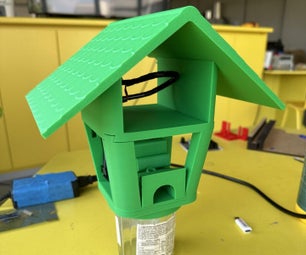Introduction: Power Inductor Measurement Without LRC Meter
This method is suitable for measuring high power, low bandwidth inductors, not suitable for small signal inductors.
This method involve the use of dangerous voltage, so please be CAREFUL of electrical safety.
Explanation
This method make use of household power line to provide a AC source of the circuit. By compare a circuit's impedance with and without the inductor-under-test, you can find the extra reactance generated by the inductor, therefore calculate its inductance.
Procedure
1.Gather information
1-1 Measure power line frequency by digital multimeter with frequency measure function
If your multimeter don't have this function, assume it is 50.0/60.0Hz (depends on region you live), doing so will create some error but are generally within acceptable range
1-2 Measure internal resistance of the inductor-under-test
Gathered information will affect the test result
2.Prepare material
3.Wire up the test circuit
4.Taking data: switch the circuit on, then measure AC voltage and current in the secondary winding of transformer
Do this quick(e.g. <=10 sec),or the heating of the resistor will create error to the measurement
5.Calculate inductance
with equations shown in above picture
Step 1: Instruments and Materials Required
Instrument:
1.Digital Multimeter
2.Clamp meter
3.Paper and pen
4.Scientific calculator(real one or online)
Material:
1.AC power cord with fused plug(0.5-3A recommended for 220v)
2.A AC switch
3.wiring terminal >=6(more the better)
4.some 400v rated wire
5.220v(or 110v)-12v transformer, power >=12 VA to provide enough current
6.27ohm 10W cement wire-wound resistor x1
Step 2: Example
Step 3: Afterwords
It is my first instructable, I apologize for any inaccuracy of content within.
This method is useful when there are no LRC meter available in your hands(they are too expensive, while you may not have a lot of opportunity working with inductor coils).
Using better multimeter and clamp meter can certainly improve accuracy of this test, the clamp meter I use here is just a cheap Chinese product.








